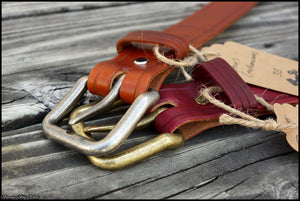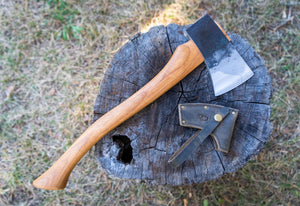
How to Set up an ENO Hammock: Tips for Happy Hangs
Lazy summer afternoons beg you to sway idly in a backyard hammock, a glass of lemonade in hand. Relax with a new book while branches rustle and sunlit shadows dance across the ground.
Camping? Forget pitching a tent. Take your trusty outdoor hammock, and rock to sleep peacefully under a canopy of stars.
An outdoor hammock pairs perfectly with any adventure, from the lawn to the wilderness. Crane’s Country Store carries durable, easy-to-pack ENO hammocks and tree-friendly straps.
The idea of lounging in a hammock sounds delightful, but many people are uncertain when faced with rope and a tree. Do tree hammocks conjure visions of tangled lines and confusing knots?
If you’re hammock-hesitant, trust us when we say that hanging a hammock has never been easier with ENO! In this article, we walk through typical hammock woes and explain how to tie a hammock to a tree.
Jump to:
Why Traditional Outdoor Hammocks Are Tricky
Hammocks have long been used as a place to rest. The hammock’s origins point toward Central and South America. Today, hammocks are found across the globe—swinging inside homes, in backyards and along the trail.
Traditional hammocks require you to tie a knot around a tree. Unless you remember knot-tying skills from your days in Scouts, tying a knot on a hammock can be a complicated business. You must find the right height on the tree and ensure the knot won’t slip once you put weight on the hammock.
Can You Tie A Suitable Hammock Knot?
A few knots that work well for hammocks are the taut line hitch, bowline and aptly named hammock knot.
- Taut line hitch. As a knot that can be easily tied and untied, the taut line hitch is good for short hammock hangs. First, bring the rope around the tree. Run the one end of the rope around the other two times. Continue for a third pass around, but this time run the end between itself and the other end.
- Bowline. These knots don’t slip and can’t be untied when tested with weight. Start a bowline knot by creating a small loop with the rope. Pass one end of the rope through the loop, then around the standing rope end. Pass it back through the loop again, coming from the other direction.
-
Hammock knot. Have hammock carabiners or rings? Pass the rope through them from top to bottom. Then flip the rope over the top of the ring from right to left. From here, form a top-to-bottom loop with the tail end of the rope.
Do Hammock Ropes Harm Trees?
You may have heard about campuses and city parks banning hammocks. Before you set up your hammock, make sure you know the rules for where you are. What may seem harmless to most can cause damage to a tree’s bark and inner tissue.
A tree’s outer bark, or rhytidome, is a protective layer that maintains moisture levels and fends off pests. Behind a tree's outer bark lies the cambium cell layer. As the “growing part” of the trunk, this layer produces new bark. Further inside the trunk, the sapwood passes water to the leaves.
If the outer bark is damaged, the tree becomes at risk of exposure to pathogens, weather conditions and insects. When deeper tissue is harmed, the tree can no longer transport water and nutrients to its branches and leaves.
You can protect trees by ditching ropes and never using plastic zip cords to hang a hammock. Choosing flat, wide straps made of nylon or polyester webbing are the best option for hanging your hammock.
How to Hang ENO Hammocks
With ENO hammocks, you don’t need to know how to tie a knot! ENO’s SingleNext and DoubleNest Hammocks work with knotless, tree-friendly suspensions. Follow these steps to hang your no-knot ENO hammock:
Before You Begin: Find A Good Spot
- Find two mature trees 10’ to 14’ apart. A mature tree is at least 6” in diameter.
- Check both trees to ensure they are living and healthy. Look at the roots and base of the truck as well as the branches above. Do not attach your hammock to dead branches.
-
Check the surrounding area for sharp objects, rocks, insect nests and other potential hazards. Then look for sensitive plant life. If you find plant or animal life on the tree or in the area, try to find another spot to hang your hammock. Your safety, along with that of the local flora and fauna, is important.
How to Set up an ENO Hammock
- Inspect your gear. Ensure your straps and suspension system don’t have any snags or frays that could lead to injury while using the hammock.
- Use the ENO Atlas or Helios Suspension Systems. Loop straps around the tree at least 5’ from the ground.
- Thread the adjustable end through the webbing end, forming a single loop.
- Attach carabiners to the straps, and make sure that the carabiners click closed.
- Sit on the hammock and adjust its height if needed. A hammock should hang 18” or less from the ground with you in it.
-
Relax!
Suspension Systems: The Atlas vs. The Helios
What’s the difference between the Atlas and Helios Suspension Systems? The Atlas Suspension System is made of polyfilament webbing, weighing 9 oz. ENO Atlas straps have 30 anchor points and are 1.5” wide, tapering to 0.75”.
The Helios Suspension System consists of polyfilament webbing and super-strong Silverlite™ cord. Helios weighs only 4.3 oz. Its lightweight structure can aid in reducing the weight of your pack. Each Helios strap is 1” wide.
You can use both systems with any hammock. Each system features wide straps with multiple adjustable anchor points. Carabiners can be used with either the Atlas or Helios Suspension Systems. Toggle-style hammocks can only be used with Helios unless paired with a set of carabiners.
Tips for Happy Hammocking: Leave No Trace Principles
The nonprofit Leave No Trace states that hammocks leave a smaller footprint than tents. No matter where you go, you may influence the habitat around you. Always strive to “leave no trace” when camping, hiking or doing other outdoor activities.
There are several best practices for hanging a hammock that follow these ethics. When you head outdoors, keep these tips in mind:
- Use tree-friendly suspension systems. “Tree saver” straps should be 0.75” to 1.5” wide. Use materials made out of webbing to reduce girdling and bark damage. Never use plastic or hammer anything into a tree.
- Hang your hammock 200’ from a water source. Shoreline and riparian areas are fragile. Establish your hammock camp away from these areas to preserve delicate plant life and soil.
- Find an established campsite if you can. If finding an established campsite isn’t possible, look for areas with less vegetation and ground cover. Never alter the area for your campsite.
- Hang your hammock on the thickest part of the tree. Choosing the sturdiest part of the tree protects you and it.
-
Take your hammock down when you leave the campsite. Animals or children could get snagged and tangled in a hammock. If you leave your campsite to hike, take down your hammock and put it back up when you return.
Now that you know how to set up a hammock, nothing is stopping you from hanging wherever you go! (Of course, always check your local laws and ordinances.)
Shop ENO hammocks and accessories at Crane’s Country Store and make hammocking even more enjoyable.
Find what suits your explorations, whether you need a comfortable hammock for two or one just for you. The ENO DoubleNest Hammock recently won the REI Co-op Editors’ Choice Award. It’s a hammock to best all hammocks.
We also stock hammock accessories to protect your peaceful rest from buzzing bugs and precipitation. Check out the ENO Guardian Bug Tent and Profly Rain Tarp to stay bug-free and dry while camping.
Have fun on your next adventure!
[caption id="attachment_458541" align="alignleft" width="400"] Enjoying an ENO hammock on a gorgeous day![/caption]
Enjoying an ENO hammock on a gorgeous day![/caption]









